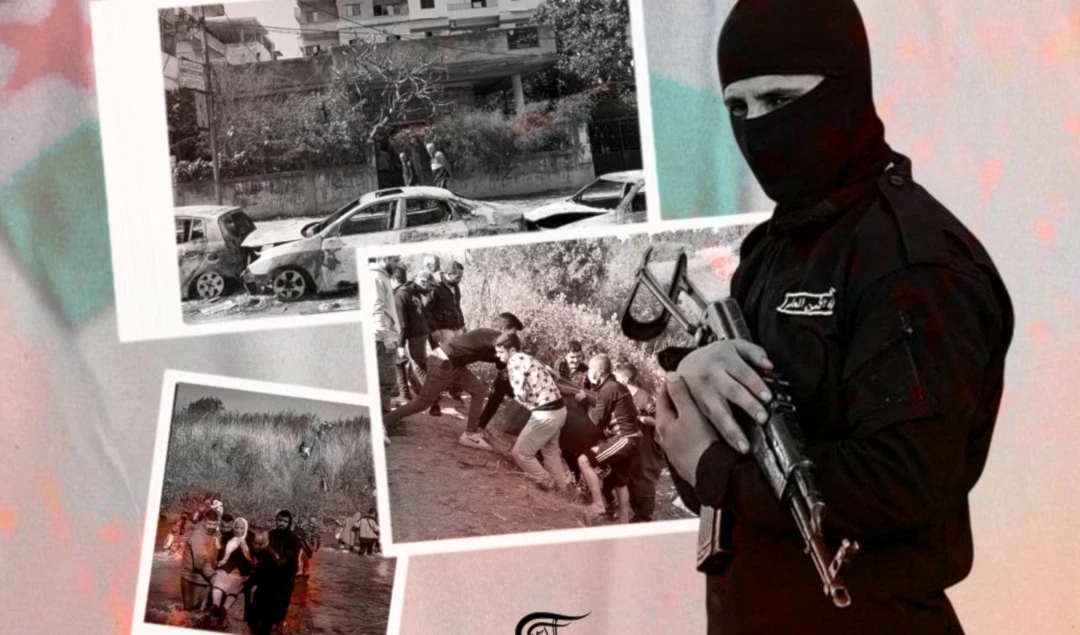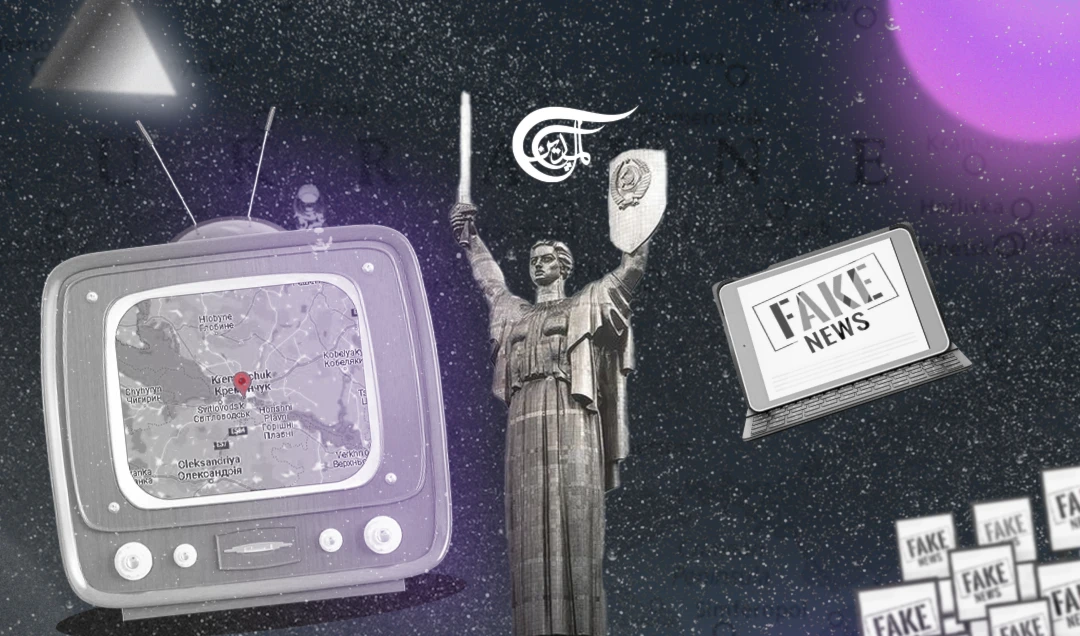Did the US take out one of its own assets when it killed the Leader of ISIS?
What is increasingly clear is that ISIS will not be defeated by the same forces that brought it into Syria and Iraq in the first place.
-

Did the US take out one of its own assets when it killed the Leader of ISIS?
Serious questions need to be asked over Washington’s role in the recent resurgence of ISIS in the Middle East.
It is unclear how ISIS leader Abu Ibrahim al Hashimi Al-Quraishi died last week, but we do know it has led to a renewed sense of US triumphalism and calls for its continued presence in Syria.
The official narrative, as told by Washington, is that he detonated a suicide vest that killed himself, his wife and his children as US special operations forces closed in on him.
Other sources put the death toll higher. The West’s favored pseudo-humanitarian organization the White Helmets, which is consistently linked to jihadist groups, said 13 were killed, including six children and four women.
Never mind the number, Washington declared the operation a success with “no US casualties.”
US President Joe Biden said the operation in Syria’s northwest NATO-occupied Idlib province was “a testament to America’s reach and capability to take out terrorist threats no matter where they try to hide anywhere in the world”.
Quraishi was the third leading jihadist to be killed in operations ordered by consecutive US presidents. Obama was in the White House in 2011 when Osama bin Laden was killed by Navy Seals in an Abbottabad compound in northern Pakistan.
The then so-called leader of the free world basked in the praise that followed from all sides of the political spectrum at the time, with the New York Times describing it as “a triumphant day for the young American president”.
It boosted his showings in the polls at a time when his ratings were flagging due to a poorly performing economy as he came into presidential elections seeking another four-year term of office.
The official version of the killing of bin Laden - in which a helicopter was destroyed just as one was in the mission to take out Quraishi after allegedly suffering “a mechanical failure” - has been thoroughly debunked by veteran US investigative journalist Seymour Hersh.
In October 2019, Donald Trump basked in the glory of the killing of Quraishi’s predecessor Abu Bakr al-Baghdadi as Turkey launched its Operation Peace Spring invasion of Syria’s Afrin province alongside a myriad of Takfiri groups.
The taking out of Baghdadi also occurred ahead of presidential elections as Trump’s support at home was dwindling for a myriad of reasons. Again, the circumstances around Baghdadi’s address remain vague, with the official story that he blew himself up to evade capture.
Whatever the reality, all three men, prized assets that could have provided crucial information about the structures and capabilities of their organizations and brought to trial for their crimes were conveniently wiped out before they could speak.
In the case of Quraishi, US intelligence was said to have helped track down the ISIS leader, but details are once more sketchy.
A number of sources suggest that the US was in fact tipped off by Hayat Tahrir al-Sham (HTS), a Turkish-backed Salafist group that controls the territory in which Quraishi was hiding.
HTS was said to have blocked off the road leading to the site of the raid ahead of the operation, indicating that it knew about it in advance and even provided the intelligence.
Two of the jihadist group’s operatives were reportedly killed near the compound during the operation, maybe to silence them but to also add credence to the claims.
HTS split from ISIS in 2013 and in 2016 it broke relations with al-Qaeda, announcing the establishment of its General Security Service in 2020.
Since then the GSS has targeted ISIS cells in Idlib province with some 21 raids across the territory.
US drone strikes on al-Qaeda targets in Idlib are believed by the jihadist group’s supporters to have been carried out with information provided to both Turkey and Washington by HTS.
A change in strategy has seen HTS seek approval from the US in recent years in a bid for its removal from international terrorist lists and recognition as a legitimate organization.
US special envoy to Syria under the Trump administration James Jeffrey has admitted to holding back-channel talks with the jihadist group, saying that HTS “was the least bad option of the various options in Idlib” which he considered one of the most important places in the Middle East.
Both Baghdadi and Quraishi were found within walking distance of the Turkish border. Anger has understandably been directed at Ankara, with bullish President Recep Tayyip Erdogan’s links to ISIS well documented.
Quraishi is believed to have been the mastermind behind the recent attack on an ISIS prison in Hasakah province which saw some 200 fighters attempt to free more than 3,000 fellow fanatics held there.
He is also known to have been the driving force behind the 2014 Yazidi genocide in Iraq’s Shengal region which saw at least 5,000 men, women and children massacred and more than 3,000 women and girls kidnapped and sold into sexual slavery.
While the two ISIS leaders were killed in close proximity to Turkey, which is by no means a mere coincidence, the role of the United States has been overlooked both in terms of the Hasaka prison attack and its links to Baghdadi and Quraishi.
Predictably the portrayal of US forces as the knights in shining armor coming along to the rescue of plucky Kurdish fighters to defeat the jihadist baddies has been pushed by Washington and a loyal pro-US media.
According to them, it justifies the continued presence of American troops in northern Syria where they are deemed by the Syrian government with some justification as an occupying force that is destabilizing the country.
The Washington-based news website Al-Monitor ran with “Islamic State prison break reinforces the value of US military protection for Syria’s Kurds”, while a host of articles fawning over the United States appeared in news outlets including the Nation, the New York Times, and CNN.
Some called on the Biden administration to impose a no-fly zone and others for the permanent reopening of the Semelka border crossing into Iraqi Kurdistan. None however have called for the lifting of US sanctions or reconciliation with Damascus, despite this call being led by none other than PKK commander Cemil Bayik.
They were all “on message” in the service of US imperialism; that is the future for Kurds and others in the northeast of Syria lies with Washington and global recognition of the entity known as the Autonomous Area of North-Eastern Syria, whatever that means in real and practical terms.
SDF commander Mazloum Abdi heaped praise on Biden thanking him and “the American people for their continuing support,” with the US President expressing his gratitude for the SDF in the operation against Quraishi.
“With our strong partnership, we have struck ISIS at its core once again,” Abdi said, as he issued a call for the US to increase its number of troops in the region, which officially number about 700.
This stance however presents a major conundrum for western liberals and supporters of what they see as a revolution in the northeastern corner of Syria.
The US is the world’s leading imperialist power and has systematically and brutally crushed liberation movements across the world, using death squads to overthrow progressive governments in Latin America and the Middle East.
One thing is clear. A revolution cannot come via the barrel of the US imperialist gun.
Washington has a long history of support for jihadist groups stretching back to its funding and arming of the mujahideen against the Soviet Union and the progressive government of Afghanistan.
The covert $1billion CIA Operation Timber Sycamore program, which was initiated by the Obama administration, remains the costliest single US intelligence intervention to date.
It saw the secret arming, training and funding of what was infamously described as groups of “moderate rebels” in Syria along with ratlines transferring weapons from Libya, much of which went to a myriad of jihadist groups.
A heavily redacted declassified US intelligence report written in August 2012 revealed that the US was prepared to accept “a declared or undeclared Salafist principality” in eastern Syria to act as a Sunni buffer to weaken Syria and block the influence of Shia Iran.
It should come as no surprise to learn that both Baghdadi and Quraishi were prisoners of the United States in the notorious Camp Bucca, although it is not clear whether their paths crossed during their respective periods in detention.
The Camp Bucca detention center in Umm Qasr, Iraq gained a reputation as a “university of jihadism” with former guards at the facility claiming that many of the inmates were further radicalized during their incarceration.
Details of Baghdadi’s spell in Camp Bucca are unclear. The Pentagon says he spent 10-months there as a civilian detainee in 2004 while others say he was detained for four years from 2005 to 2009.
Former compound commander at the facility and former US Air Force security forces officer James Skylar Gerrond is convinced that Baghdadi was one of those radicalized at the detention center.
“Many of us at Camp Bucca were concerned that instead of just holding detainees, we had created a pressure cooker for extremism,” he said.
Quraishi was detained at the camp after US forces picked him up in Mosul, Iraq in January 2008, although details of the operation remain limited.
In a press release at the time, US forces claimed to have captured “a wanted individual believed to be the deputy leader of al Qaeda in Iraq for the network operating in the city.”
It added that Quraishi - known at the time by the alternative name Amir Muhammad Said Abd al-Rahman al-Mawla - had “previously served as a judge of an illegal court system involved in ordering and approving abductions and executions.”
During interrogations by US intelligence services, he gave the names of some 88 individuals some of whom he said were key figures in ISIS. He gave the organizational positions of 64 of them, detailing their positions in the legal, military security, media and administrative branches of the organization.
In one document he appears to offer an affidavit, testifying against 20 named individuals and identifying illegal activities including kidnappings, assassinations and attacks on coalition forces.
He also gave information about the structure of the jihadist organization completing “a line and block chart” showing the names and positions of 40 individuals. These details are believed to have led to some 39 being killed by US forces.
It is clear that Quraishi was useful to the US, the level of detailed information he shared makes him a US asset, or at the very least an informant. The nature of the operation to take him out - which Turkey was not told about in advance - asks more questions than it answers.
Was he killed by US operatives as he had served his purpose or because of fears his role and links to Washington could be exposed?
Is it really conceivable that both he and his predecessor Baghdadi were simply released into the wilds and allowed to find their way to the very top position in ISIS without being tracked or monitored by US intelligence services?
It seems highly unlikely.
Just as it stretches credibility to suggest that the attack on a prison in Hasakah province, which saw some 200 ISIS fighters attempt to free 3,000 of their fellow fanatics, could have been planned and carried out in an area teeming with US soldiers and intelligence without Washington’s knowledge.
It would represent the biggest intelligence failure since the 9/11 attacks on the Twin Towers in New York and the Pentagon if this was also to have been missed.
The main beneficiaries of the resurgence of ISIS in northern Syria, is the US, which will also be wary of the prospect of the AANES rebuilding its relations with the Syrian government as proposed by Bayik.
Turkish air strikes on the Makhmour Refugee Camp and Shengal in Iraq along with Derik in northeastern Syria last week provoked outrage, with the US rightly condemned for allowing Erdogan to operate unhindered.
But instead of leading to calls for the continued US presence in Syria, it should serve to underline once again that Washington is no friend of the Kurdish people.
The US operates in the interests of imperialism, brutally crushing resistance movements with the use of proxy forces and death squads. It has certainly used the existence of ISIS to maintain western control in the Middle East and seeks to divide Syria, using the Kurds to further its aims.
A similar situation is developing in northern Iraq where Turkey’s ever-expanding occupation, which sees some 85 military bases linked by a network of roads, and a military airbase from where it launches drone strikes against the local population, has coincided with a spike in attacks from ISIS.
At least three separate credible sources, including Kurdish Peshmerga security forces, have told me that the US and Turkey are working together to ship ISIS fighters via ratlines into Iraq to justify a continued presence in the country.
Despite Erdogan’s performative bluster Turkey, which is rightly the source of justifiable anger, is not an independent force. Its geopolitical position has seen it operate as a US client state, initially as a bulwark against the Soviet Union.
It continues to be armed to the teeth by western powers, acting as NATO’s battering ram in the Middle East.
What is increasingly clear is that ISIS will not be defeated by the same forces that brought it into Syria and Iraq in the first place, with endless military interventions and sanctions destabilizing the Middle East and creating the conditions for jihadism to thrive.
The role of the Syrian Arab Army in defeating ISIS and other jihadist groups is often overlooked by western so-called progressives. Yet its heroic resistance during 11 years of foreign-backed war saw tremendous sacrifices and an ultimate victory as it regained control of vast swathes of the country.
The people of Syria, Iraq and other countries in the Middle East deserve a future free from the constant meddling, manipulation and interference of world imperialist powers.

 Steve Sweeney
Steve Sweeney
 13 Min Read
13 Min Read











